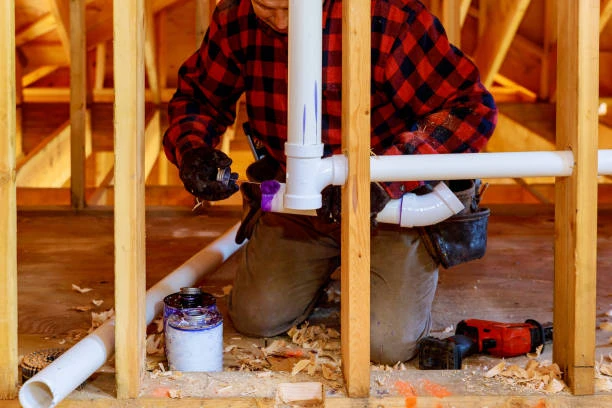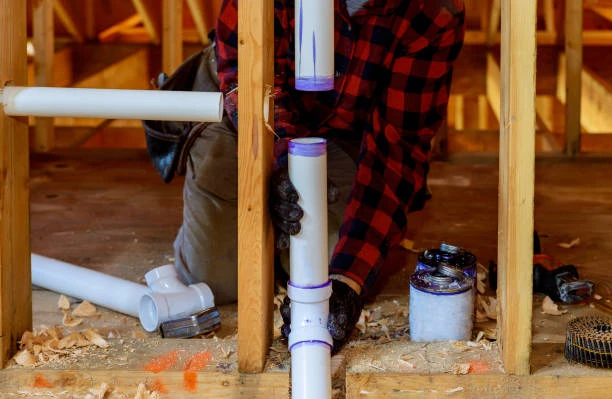Anti-Dumping Duty Extended on Indian CPVC Imports
The ongoing trade dynamics between countries have significant implications for industries worldwide, particularly in the construction sector. Recently, the extension of the anti-dumping duty on Indian Chlorinated Polyvinyl Chloride (CPVC) imports has raised concerns and discussions within the market. This article explores the reasons behind this decision, its impact on the industry, and the role of CPVC fittings in construction and plumbing applications.
Understanding CPVC and Its Importance
Chlorinated Polyvinyl Chloride, or CPVC, is a thermoplastic material widely used in various construction applications, particularly in plumbing systems. Its unique properties make it an ideal choice for both residential and commercial projects. Here are some key characteristics of CPVC:
- Durability: CPVC fittings are known for their resilience, able to withstand high temperatures and pressures. This makes them suitable for hot water distribution systems, ensuring longevity and reliability.
- Corrosion Resistance: Unlike traditional metal pipes, CPVC does not corrode, which can mitigate risks associated with leaks and contamination.
- Cost-Effective: The affordability of CPVC fittings compared to other materials provides a budget-friendly option without compromising quality.
- Ease of Installation: Lightweight and easy to handle, fittings simplify the installation process, reducing labor costs and project duration.
The Implications of the Anti-Dumping Duty Extension
The decision to extend the anti-dumping duty on Indian imports stems from concerns over unfair pricing practices that could harm domestic manufacturers. Anti-dumping duties are tariffs imposed on foreign imports believed to be priced below fair market value, designed to protect local industries from international competition.

Reasons for the Extension
- Market Protection: The primary aim of extending the anti-dumping duty is to safeguard domestic manufacturers from being undercut by cheaper imports. This ensures that local businesses can compete fairly and maintain their market share.
- Quality Control: By imposing stricter regulations on imports, authorities aim to ensure that only high-quality products enter the market, ultimately benefiting consumers who rely on durable and reliable CPVC fittings.
- Encouraging Local Production: The extended duty incentivizes local manufacturers to ramp up production capabilities and invest in technology, fostering industry growth and job creation.
Effects on the Industry
The extension of the anti-dumping duty on Indian CPVC imports will have various effects on the industry:
- Price Stability: Domestic manufacturers are likely to experience price stability, allowing them to plan better for future investments and production.
- Increased Local Supply: With reduced competition from imports, local producers may focus on increasing supply to meet domestic demands, potentially leading to innovations in product offerings.
- Consumer Impact: While consumers may face slightly higher prices due to reduced competition, the long-term benefits of supporting local industries and ensuring quality products may outweigh immediate costs.
The Role of CPVC Fittings in Modern Construction
CPVC fittings are integral to modern plumbing systems, offering numerous advantages for both residential and commercial applications. Here’s a closer look at how fittings contribute to efficient construction practices:
1. Versatility
CPVC fittings are available in various shapes and sizes, enabling their application across different plumbing systems. Their versatility makes them suitable for a wide range of projects, from small residential homes to large commercial buildings.
2. Compliance with Standards
In many regions, fittings comply with industry standards for safety and efficiency. This compliance ensures that installations meet regulatory requirements, promoting safety for end-users.
3. Performance in Extreme Conditions
One of the standout features of fittings is their performance in extreme temperature conditions. They can handle temperatures up to 200°F (93°C), making them perfect for hot water applications. This capability is particularly crucial in regions where hot water systems are essential.
4. Environmental Considerations
CPVC is a sustainable choice for plumbing applications. It is 100% recyclable, and its production process generates fewer greenhouse gas emissions compared to other materials. By choosing fittings, builders can contribute to environmentally friendly construction practices.
5. Low Maintenance
CPVC fittings require minimal maintenance compared to other materials, such as metal pipes, which may corrode over time. This low-maintenance nature allows homeowners and businesses to save on repair costs and ensure the longevity of their plumbing systems.

Conclusion
The extension of the anti-dumping duty on Indian CPVC imports highlights the ongoing efforts to protect local industries while promoting fair trade practices. As the demand for CPVC fittings continues to grow in the construction sector, understanding these dynamics is crucial for builders, contractors, and consumers alike. By prioritizing the use of high-quality fittings, stakeholders can ensure durable, efficient, and environmentally friendly plumbing systems that meet the needs of modern construction.
FAQs
1.What are CPVC fittings used for?
- CPVC fittings are primarily used in plumbing systems for both hot and cold water applications, providing a durable and corrosion-resistant option.
2.How does the anti-dumping duty affect prices?
- The anti-dumping duty may lead to higher prices for imported but helps stabilize prices for domestic manufacturers, ultimately benefiting local economies.
3.Are CPVC fittings safe for drinking water?
- Yes, fittings are safe for transporting potable water, as they do not leach harmful chemicals.
4.What is the maximum temperature CPVC can handle?
- CPVC can handle temperatures up to 200°F (93°C), making it suitable for hot water applications.
5.Can CPVC fittings be recycled?
- Yes, CPVC is fully recyclable, contributing to sustainable construction practices.


















